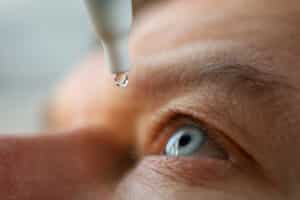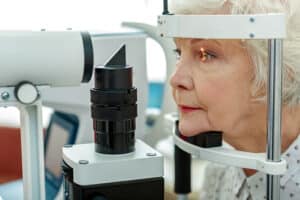When Does Glaucoma Treatment Become Necessary?
- Posted on: Mar 21 2023
Glaucoma is a leading cause of blindness. There is no cure for glaucoma, and the damage caused by it is irreversible.
However, swift treatment can stop it from progressing and ultimately save your vision. About three million people in the United States are living with glaucoma.
Although, according to the CDC, half of them do not even realize they have it. With glaucoma, early detection and treatment are vital.
They can mean the difference between maintaining your vision and losing it altogether. Keep reading to find out when glaucoma treatment becomes necessary!
What Is Glaucoma?
Glaucoma refers to a group of diseases that damage your optic nerve. Located at the back of your eye, your optic nerve contains a million nerve fibers.
These transport information to your brain in order to create images. When the optic nerve cannot function properly, vision loss can result.
While the exact cause of glaucoma has yet to be identified, it usually occurs when there is high eye pressure, also known as intraocular pressure or IOP. While glaucoma can take many forms, two types are most common: open-angle glaucoma and angle-closure glaucoma.
Open-Angle Glaucoma
Open-angle glaucoma comprises the vast majority of glaucoma cases. Fluid is constantly being created inside your eyes.
In order for your eyes to maintain a healthy pressure, fluid must also constantly flow out from the eye. The fluid exits the eye via the trabecular meshwork.
When you have open-angle glaucoma, there is a blockage in this structure. As a result, fluid gradually builds in the eye, and pressure increases.
Angle-Closure Glaucoma
Angle-closure glaucoma is less common. In this case, fluid cannot reach the trabecular meshwork.
The pathway between the cornea and iris becomes too narrow for fluid to flow through it. So, fluid builds up and rapidly increases eye pressure.
Some people carry a higher risk of developing glaucoma. Risk factors include being older than forty, being farsighted or nearsighted, having diabetes, and using corticosteroid medication for an extended period of time.
Trauma to the eye can lead to glaucoma as well. Glaucoma can also run in families.
What Are the Symptoms of Glaucoma?
Those with glaucoma can experience different symptoms depending on which type of glaucoma they have. With open-angle glaucoma, which is far more common, symptoms progress gradually.
In the early stages, many people do not notice any symptoms. It can be months or even years before they start to experience the effects.
By this point, the damage has already occurred. This is why some refer to glaucoma as the “silent thief of sight.”
Symptoms of open-angle glaucoma include:
- Blurriness
- Blind spots at the edges of your peripheral field
- Halos around lights
- Difficulty seeing in dim lighting conditions
- Frequent need for prescription changes
- Impaired central vision
Angle-closure glaucoma progresses much faster, with symptoms setting in quickly. Immediate medical intervention is necessary.
Angle-closure glaucoma can cause:
- Severe blurriness
- Severe eye pain and headache
- Nausea or vomiting
- Rapidly decreasing vision
- Colorful halos around lights
How Is Glaucoma Treated?
Glaucoma is treatable, but early intervention is key. Once the damage has occurred, there is no way to reverse it.
If left untreated, it can eventually lead to total blindness. Angle-closure glaucoma is considered a medical emergency that requires immediate attention.
If you are experiencing the symptoms of angle-closure glaucoma, call your eye doctor or go to the emergency room. With open-angle glaucoma, since many people typically do not notice any symptoms until the disease has already progressed to a certain point, regular eye exams are essential.
These provide the opportunity to spot early signs and avoid permanent damage. If you are diagnosed with glaucoma, your eye doctor will most likely recommend treatment right away to prevent the condition from getting worse.
Treatment for glaucoma is aimed at decreasing your eye pressure.
Glaucoma Eye Drops
Prescription eye drops are typically the first method of treatment for glaucoma. Eye drops may help fluid drain from the eye or reduce the production of fluid.

Laser Treatment
Glaucoma can also be treated with a laser. One laser treatment method for open-angle glaucoma is selective laser trabeculoplasty or SLT.
SLT is a safe, efficacious, and FDA-approved way to reduce eye pressure. During the procedure, a laser is applied to the trabecular meshwork.
This creates a clear pathway for fluid to drain out of the eye. Once the fluid is able to flow appropriately, eye pressure is decreased.
SLT can allow many people to reduce their need for regular eye drops.
Glaucoma Surgery
If glaucoma does not respond to other treatments, your doctor may recommend surgery. A trabeculectomy is one procedure that makes it easier for fluid to drain from the eye.
A small opening is created, providing another pathway for fluid to flow. Small drainage tubes can also be implanted.
When was the last time you were checked for glaucoma? A simple exam can provide the peace of mind that your eyes are healthy.
Are you experiencing vision changes or other symptoms of glaucoma? Schedule an appointment at Jacksonville Eye Center in Jacksonville, FL, today!
Posted in: glaucoma



